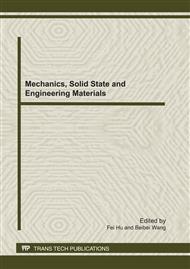p.412
p.418
p.423
p.429
p.434
p.440
p.445
p.451
p.456
Effect of Sulfosalicylic Acid on Kinetics of Ce3+/Ce4+ Electrode Reaction
Abstract:
The effect of sulfosalicylic acid (SSA) on the electrochemical behaviour of Ce3+/Ce4+ redox couple was studied using voltammetry at stationary electrode and rotating disc electrode (RDE). When the SSA was added to the Ce3+/Ce4+ electrolyte there was change to the peak current and peak potential, i.e. the increase of peak current and the decrease of peak potential difference. The diffusion coefficient of Ce3+ is 6.5 × 10-6 cm2 s-1 and the standard rate constant of the Ce3+/Ce4+ redox reaction is 3.2 × 10-4 cm s-1 in the presence of SSA, which are all larger than that in the absence of SSA (3.6 × 10-6 cm2 s-1, 2.0 × 10-4 cm s-1). Therefore, the SSA as the additive in the supporting electrolyte for a cerium redox flow battery (RFB) application will result in a high voltage efficiency and will satisfy an important requirement for a RFB electrolyte.
Info:
Periodical:
Pages:
451-455
Citation:
Online since:
July 2011
Authors:
Price:
Сopyright:
© 2011 Trans Tech Publications Ltd. All Rights Reserved
Share:
Citation:


